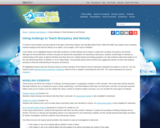
Students sort objects according to whether they sink or float.
- Subject:
- Mathematics
- Science
- Material Type:
- Lesson Plan
- Provider:
- BetterLesson
- Date Added:
- 12/01/2022

Students sort objects according to whether they sink or float.

Biology 2e is designed to cover the scope and sequence requirements of a typical two-semester biology course for science majors. The text provides comprehensive coverage of foundational research and core biology concepts through an evolutionary lens. Biology includes rich features that engage students in scientific inquiry, highlight careers in the biological sciences, and offer everyday applications. The book also includes various types of practice and homework questions that help students understand—and apply—key concepts. The 2nd edition has been revised to incorporate clearer, more current, and more dynamic explanations, while maintaining the same organization as the first edition. Art and illustrations have been substantially improved, and the textbook features additional assessments and related resources.


By the end of this section, you will be able to do the following:
Define water potential and explain how it is influenced by solutes, pressure, gravity, and the matric potential
Describe how water potential, evapotranspiration, and stomatal regulation influence how water is transported in plants
Explain how photosynthates are transported in plants

In this lesson, students will use a variety of materials to create a boat that float and hold weight without sinking.

Learn a list of vocabulary needed in the kitchen with the focus on large appliances. Interactive audio and written vocabulary appear as the mouse moves over the colorful illustrations.

This is an educator's guide for a unit on things that sink or float. It includes lesson plans, experiments, and activities. Students apply the scientific method as they investigate whether objects sink or float.

This article highlights activities for elementary students that model icebergs and develop an informal understanding of the concepts of buoyancy and density. Suggestions for inquiry-based activities are included.